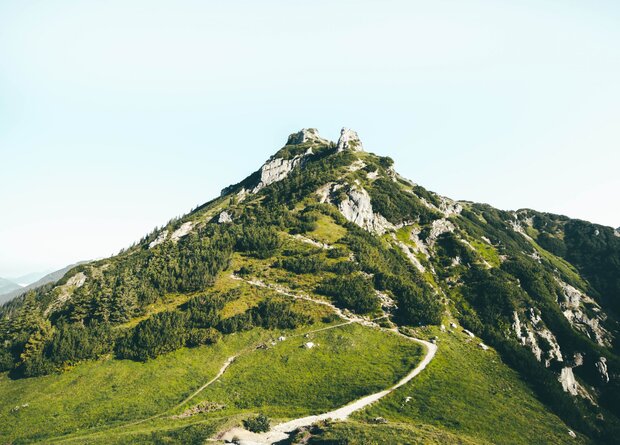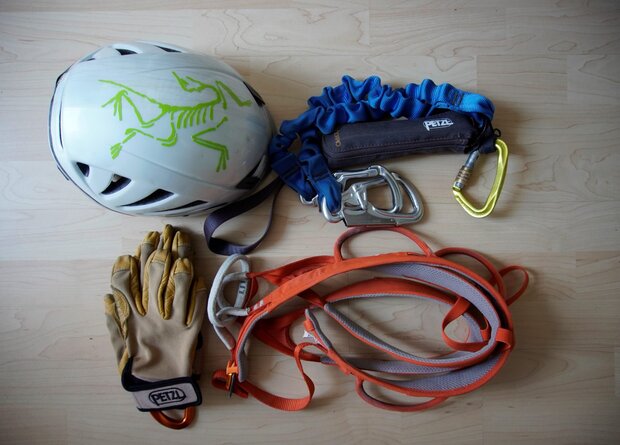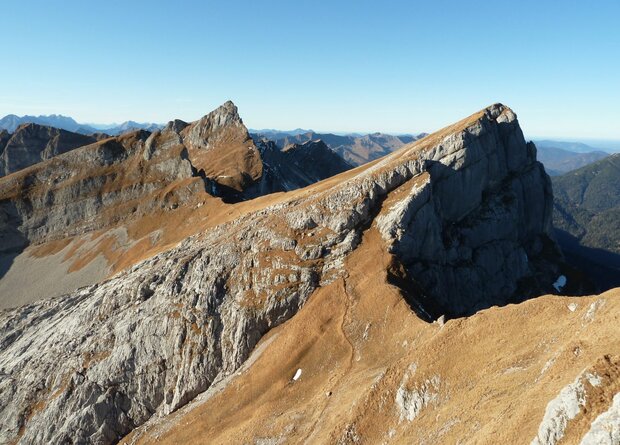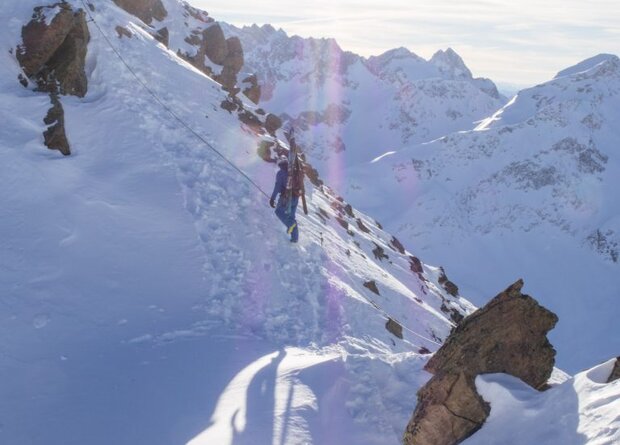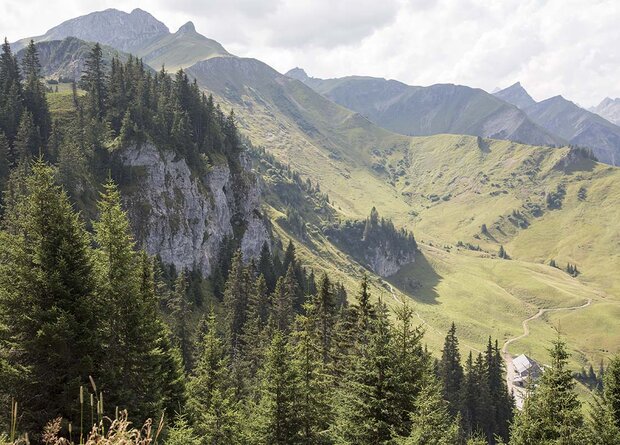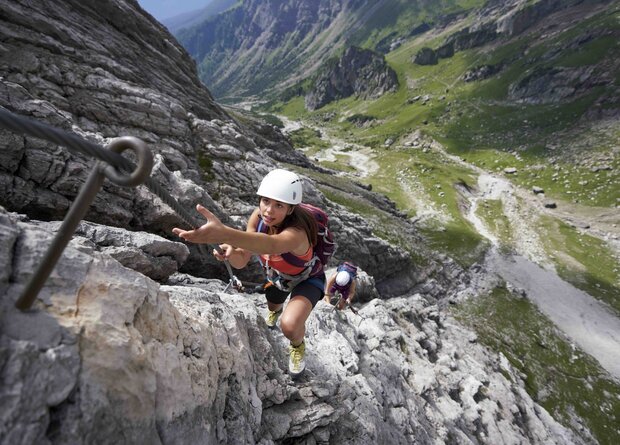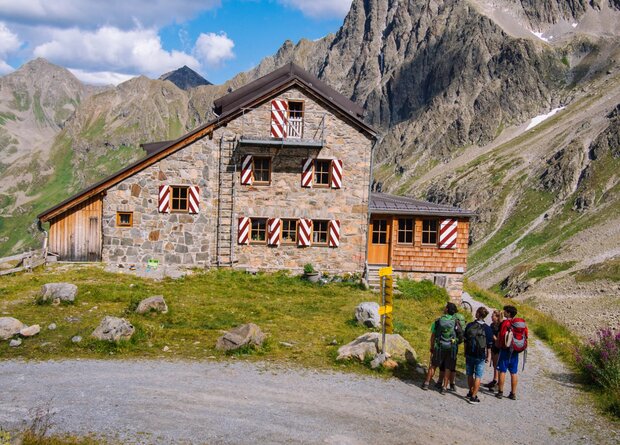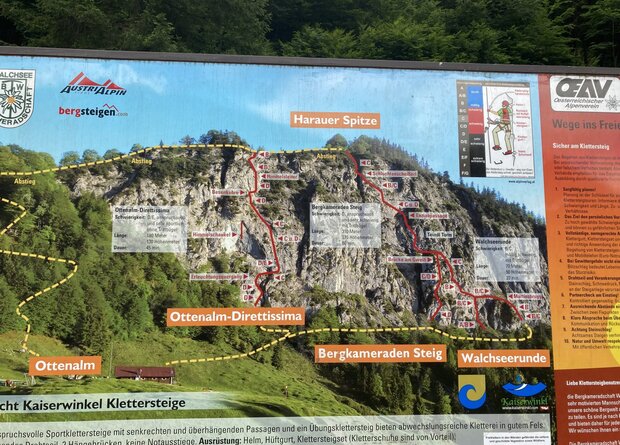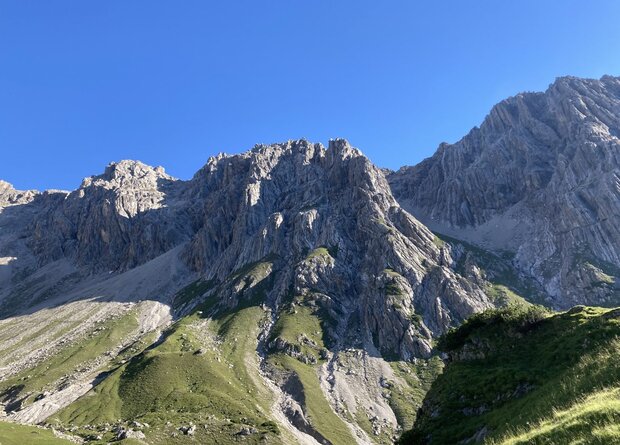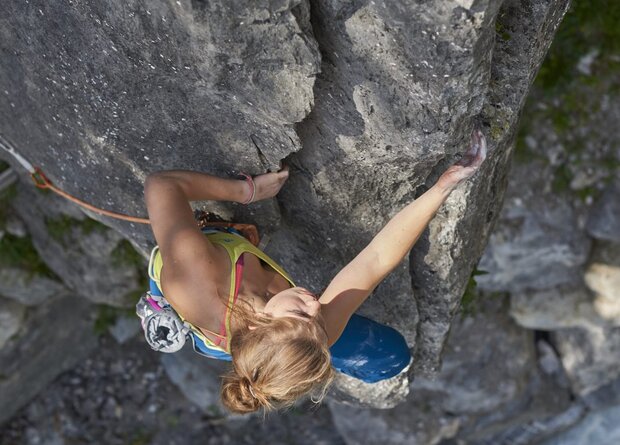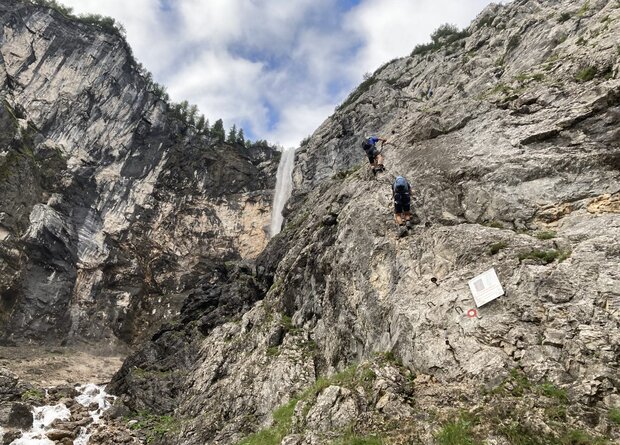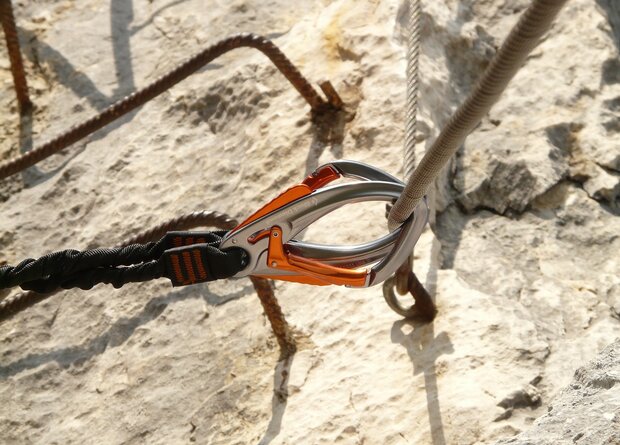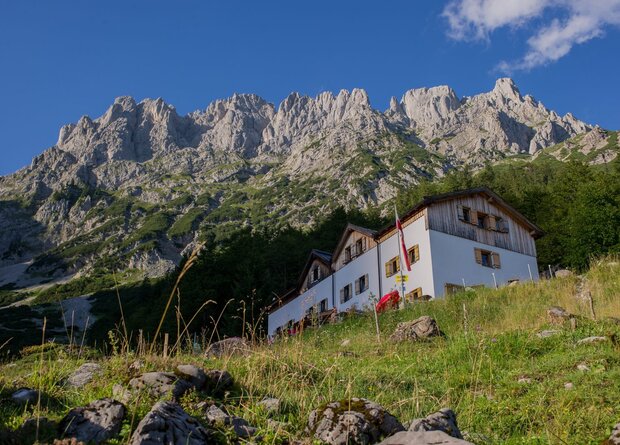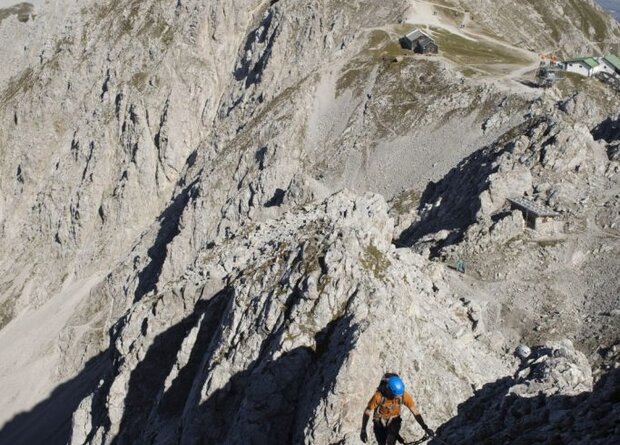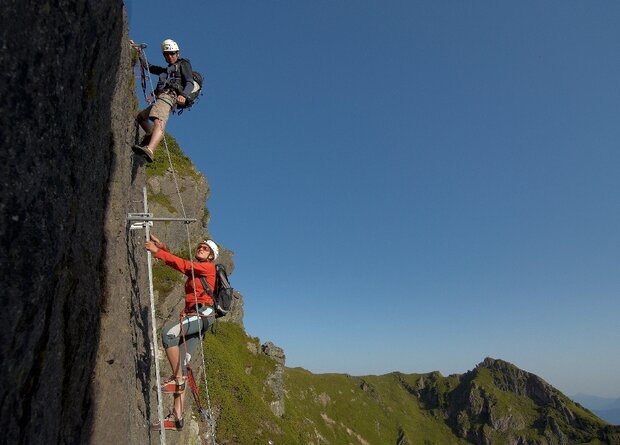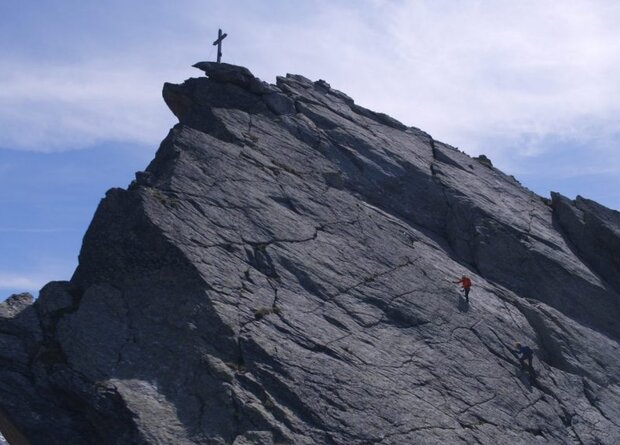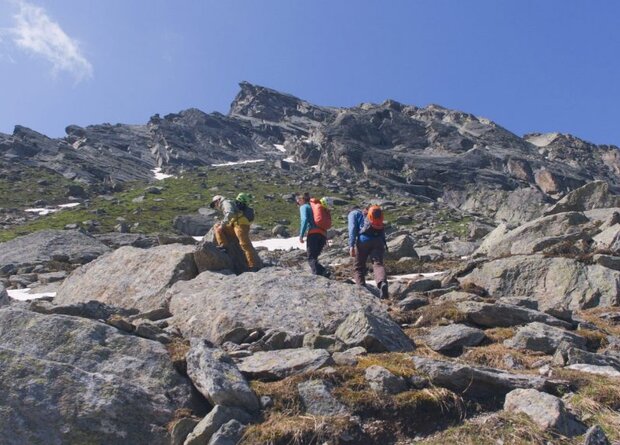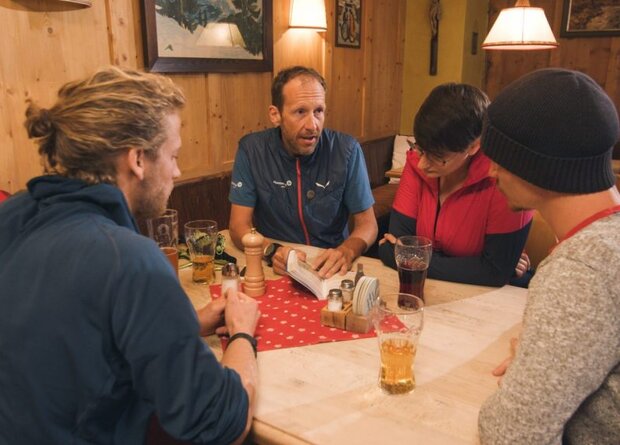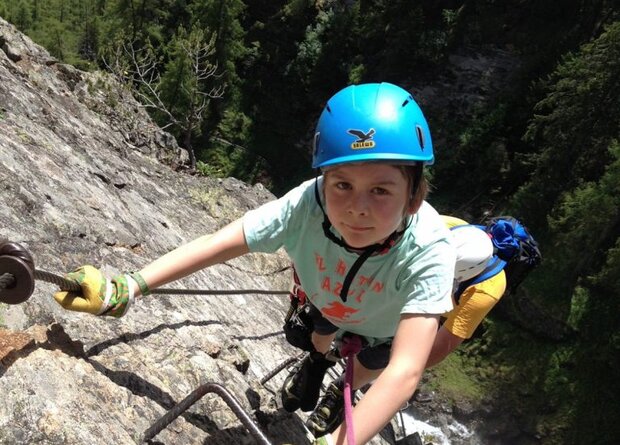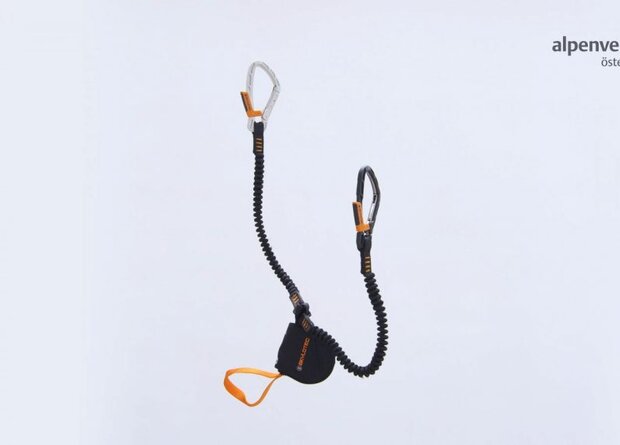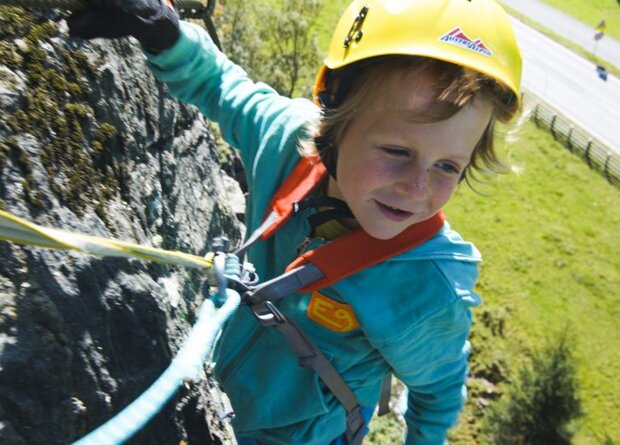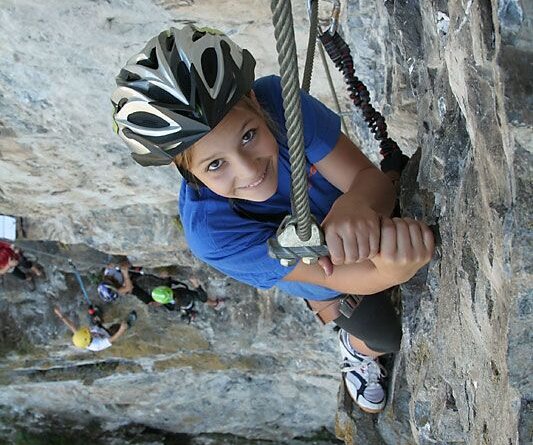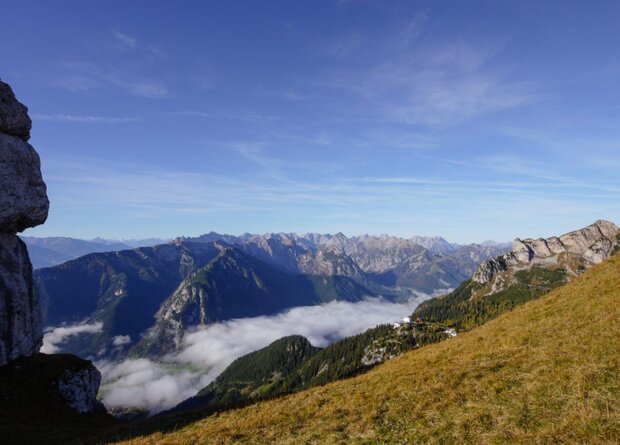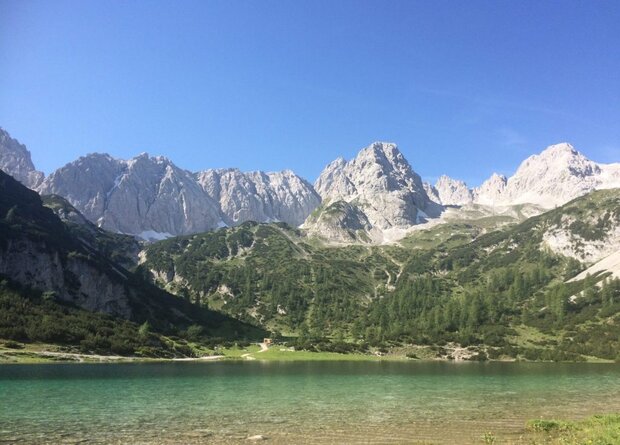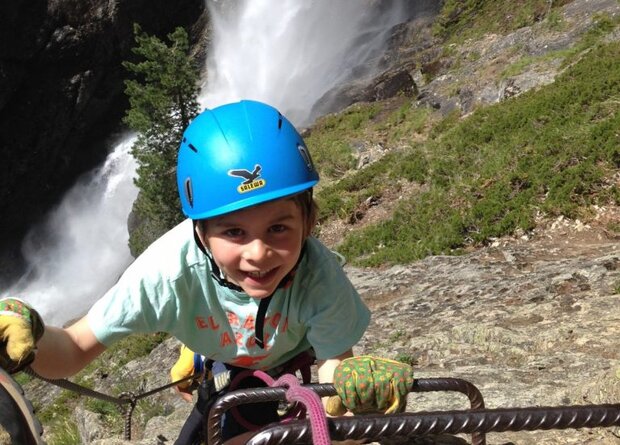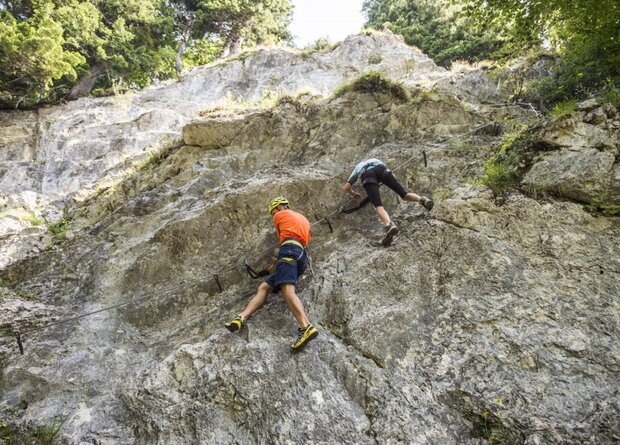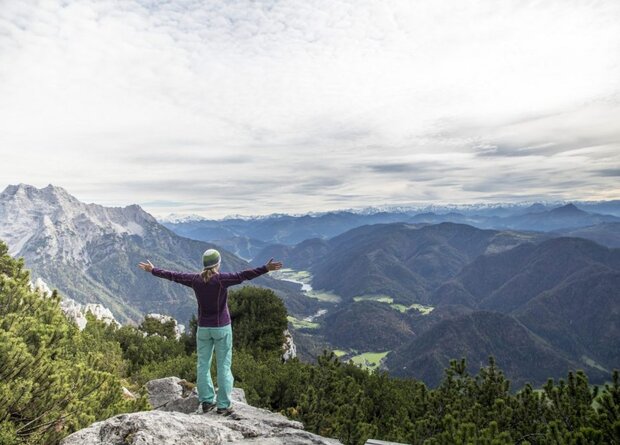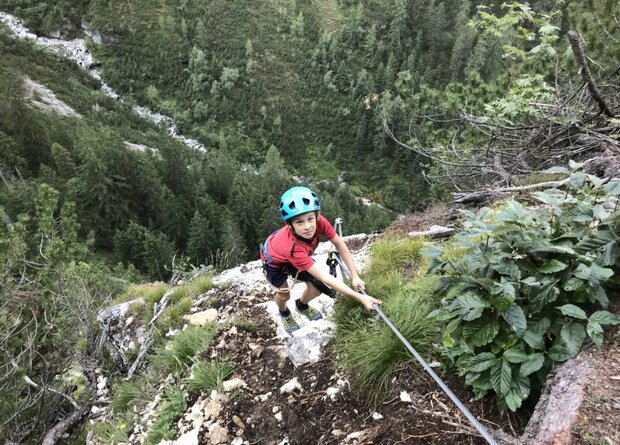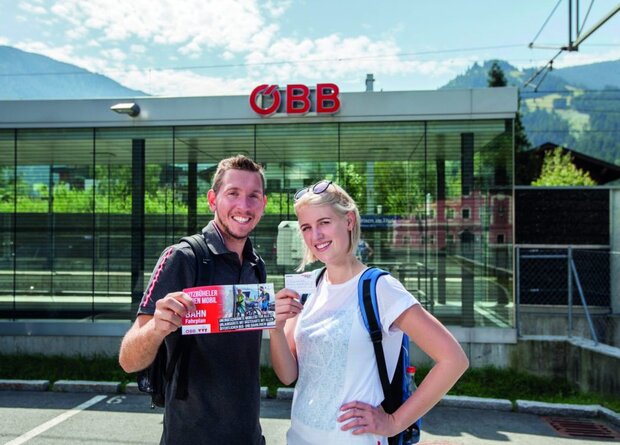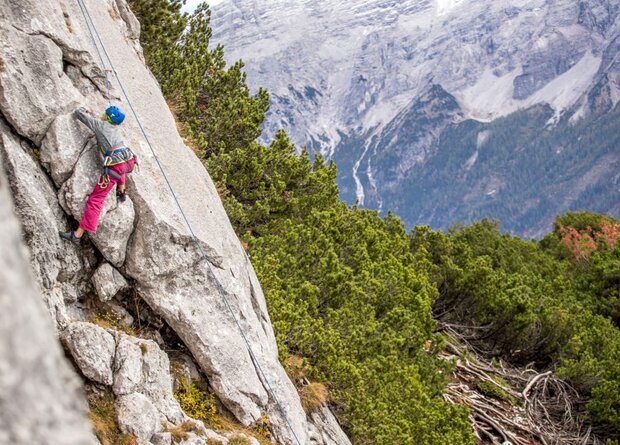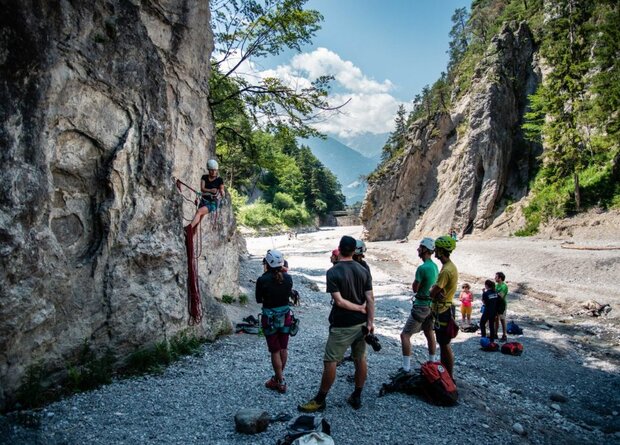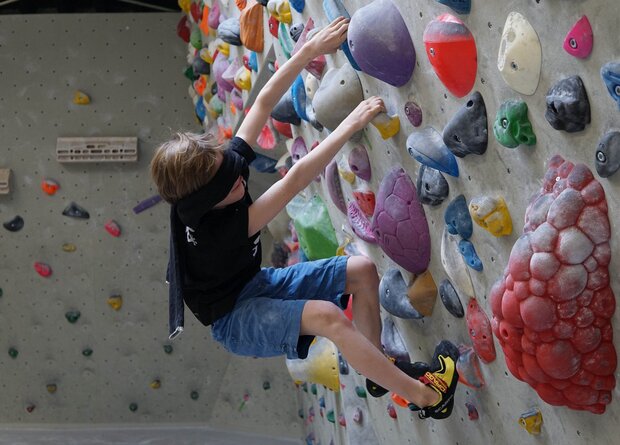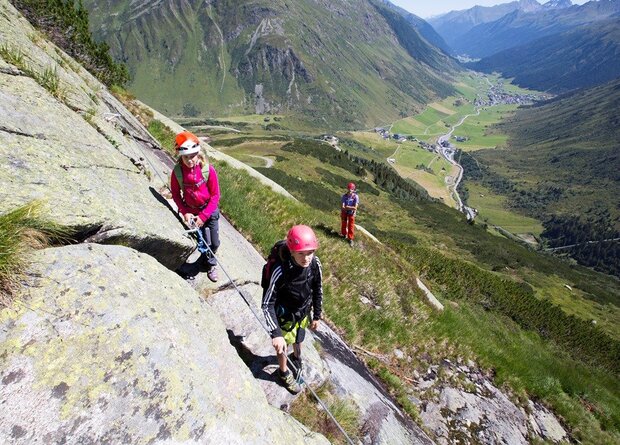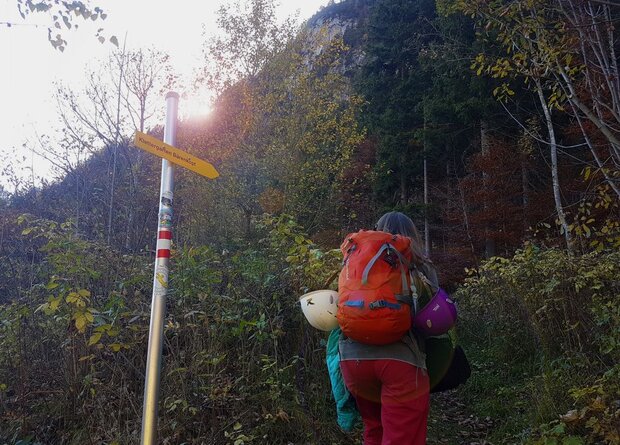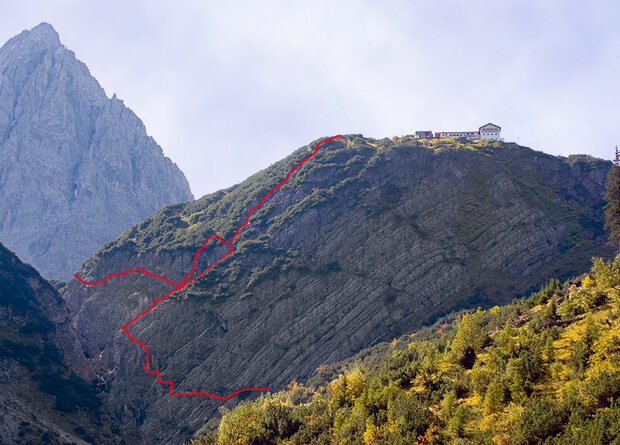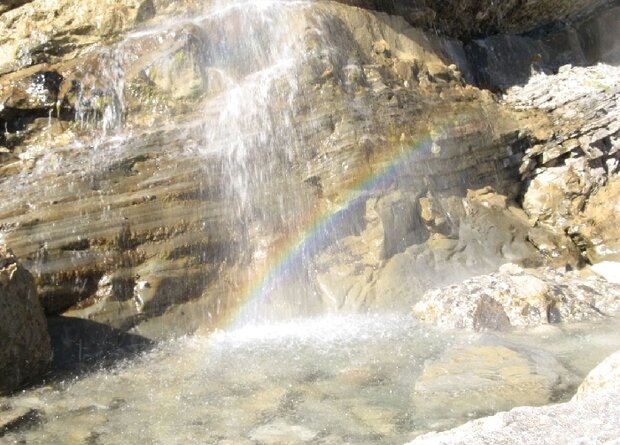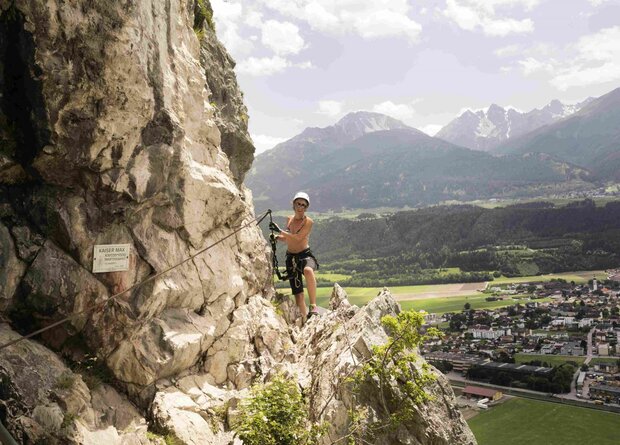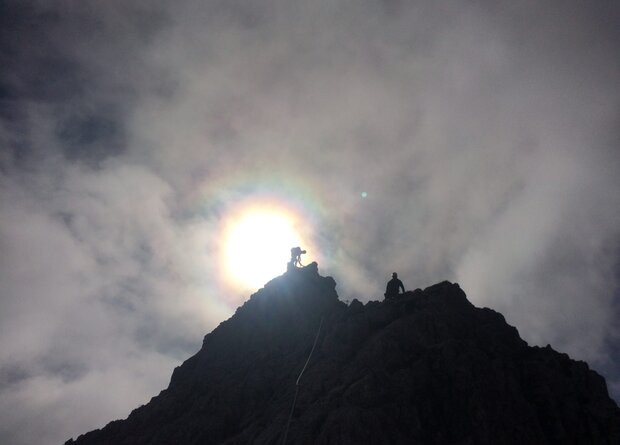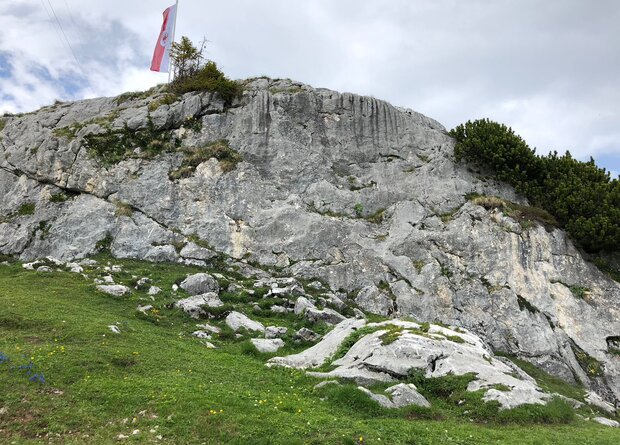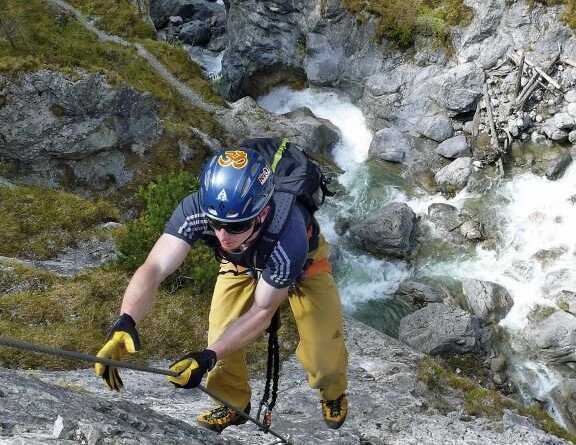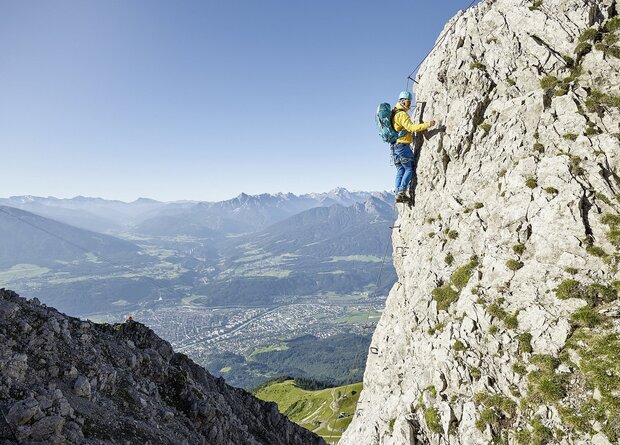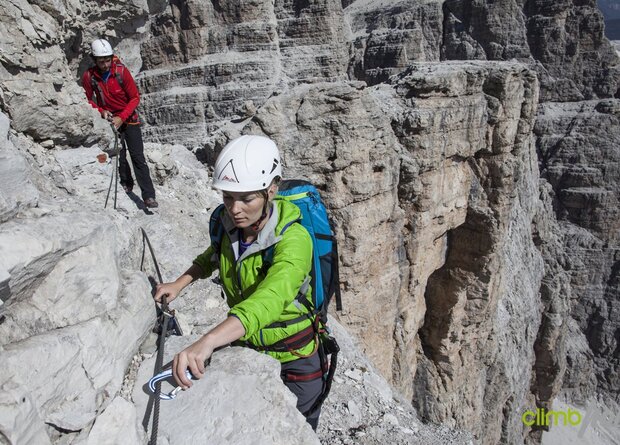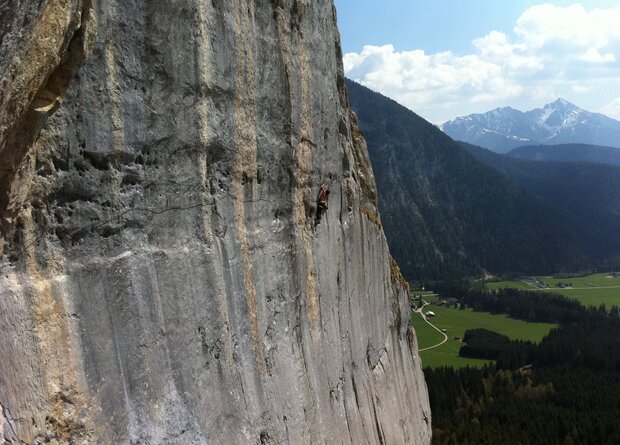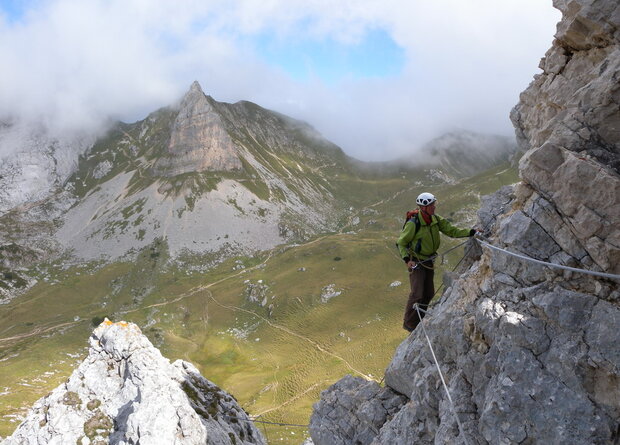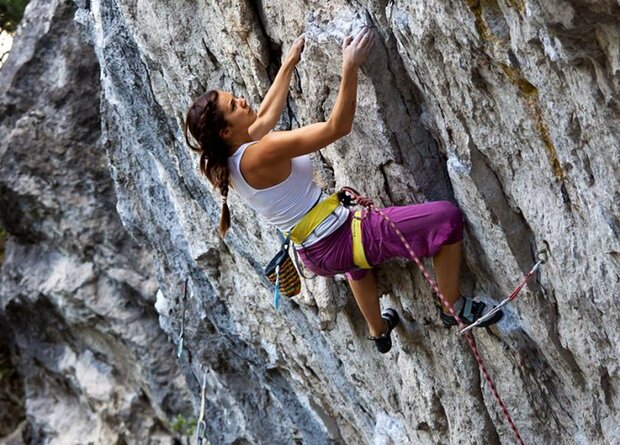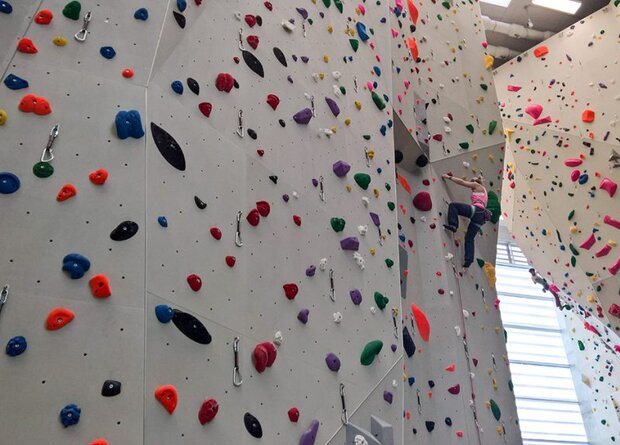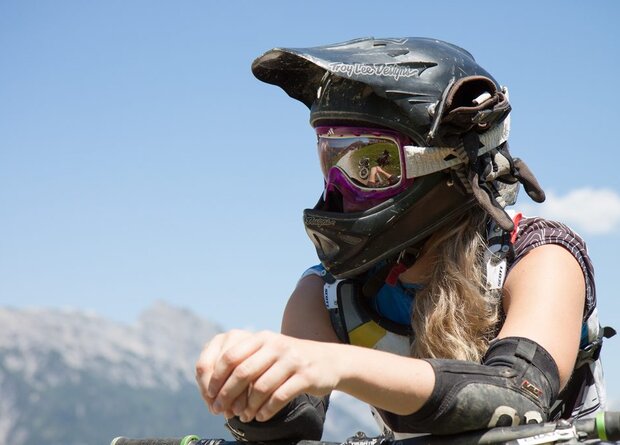"I heard there's a new steep variant on the via ferrata in Ötztal. Can we try it?" my father asked me a few weeks ago as we sat comfortably on the terrace with coffee and cake. How steep can a via ferrata be, I thought to myself and readily agreed to accompany him on the ascent of the new variant at the Lehner waterfall.
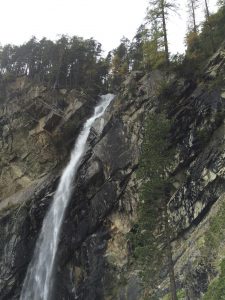
No sooner said than done, a few days later we set off in the direction of Ötztal. The beautifully landscaped parking lot is already half full. No wonder, as it's one of those golden autumn days that are predestined for a trip into the mountains. After the short ascent, we reach the entrance in 10 minutes. A local couple have just set off and are skillfully working their way up the first steep ascent.
Many via ferratas traditionally start out steep and difficult to give aspirants a taste of what lies ahead. A clever trick to protect inexperienced mountaineers from overestimating themselves and to avoid worse.
We ourselves also set about putting on our climbing harnesses and mounting the via ferrata sets. A cheap pair of construction gloves (preferably rubberized) from the DIY store protects against blisters and damage to the wire rope. Wisely, I also keep my 30m single rope and Microtraxion ready to secure my father in steeper terrain. Experience has shown me that clipping on and operating the via ferrata set requires the most strength and it is often a great help for weaker climbers if you can spare them this procedure.
However, everything is still in the green zone and we climb through the first steep passages without any great difficulty. The middle section is a little easier and leads southwards high above the stream bed through the almost vertical rock jumps. The waterfall in front of us and the steep slabs around us are a fantastic natural spectacle. The developers have put in plenty of steps, but we keep coming across technically difficult sections.
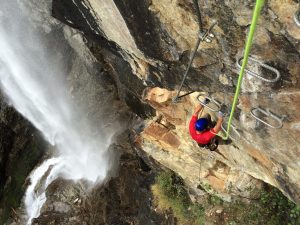
Halfway up, the via ferrata splits. We follow the new line straight ahead towards the slightly overhanging rock face. My father is a little quiet by now and I can tell he's tense. We tackle the key passage without much hesitation. I have now tied my father directly into the rope and start up the first 20m. For a "non-climber", this section is guaranteed to give you fat forearms! I give my father a few last tips on how to keep his arms stretched and climb quickly. A few minutes later, he appears next to me, visibly relieved to have mastered the steepest section. The next part up to the "Flying Fox" is a little easier and we are both glad that we can sign the summit book on the cozy viewing bench. After a few sips of water, we master the rope bridge over the waterfall and reach the newly created hiking trail, which leads past an exposed viewing platform. From here, you can see the entire via ferrata and the many climbers who are now scrambling along the path.
Via ferratas are booming and even if the alpinists of this world argue about the sense and nonsense of them, I would like to end this article with a quote from Reinhold Messner (1979): "I have met so many happy people on them that I have to be in favor of them and I also believe, like Fritz Peterka, that the future belongs to the insured via ferrata as a refined form of walking."
